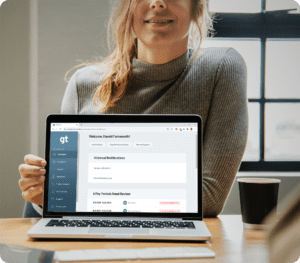December 7, 2021
Self-Direction Tips for Case Managers
Self-direction programs (also called in-home services) often have higher satisfaction with the people we all serve. But often, referrals for these programs can be few and far between. This is because many case managers haven’t received information about the self-direction programs in their regions.
Understandably, no case manager wants to refer to programs they don’t understand. In turn, this lead to less referrals to the programs and fewer people experiencing the better outcomes that often accompany self-directed programs.
This resource gives an overview on the following topics:
- What are self-directed programs?
- Why refer to self-direction programs?
- How do self-direction program enrollments work?
- How do I submit a referral to an FMS?
- What self-direction programs are in my region?
1. What are self-directed programs (in-home services)?
With self-direction programs, the people we serve have the right to live the life they choose—regardless of age or ability—in their own home or community.
Essentially, people can ‘waive’ their right to receive Medicaid-funded support in a traditional facility and instead opt to get that support in their own home. This is why self-directed programs are also called waivers. In order to get enrolled in a self-direction program, the person must be Medicaid eligible.
During enrollment, the person receiving support can pick out the services they want to receive and choose the people they want to provide those services. From help around the house to 24/7 medical care, there’s personalized support for whatever they need. This removes the frustration of services that don’t match their life.
2. Why refer to self-direction programs?
Higher Satisfaction
People receiving in-home, self-directed care are 90% more likely to be very satisfied with how they live their lives.
Higher Quality of Life
People receiving self-directed care report a higher quality of life than people undergoing traditional care. Primary caregivers are significantly more satisfied with their lives in general.
Better Health Outcomes
Self-direction significantly reduces unmet personal care needs (and increases personal safety during COVID-19).
Thanks to PDO, I can stay in my daughter’s home. My son-in-law provides the care I need, and they both help me stay safe from the coronavirus.
Self-Directed Program Participant, Florida
3. How does self-direction program enrollments work?
Once you meet a client who is Medicaid eligible and wants to remain in their own home and community, you can start the enrollment process.
Step 1
Explain self-direction to your client and review the self-direction programs in your state. Help your client find the one that best fits their needs.
Step 2
Help your client develop a person-centered plan and service plan.
Step 3
Refer your client to a financial management service (also called fiscal/employer agent) who will help them put their plans into action. The FMS will also support you and your client during the self-directed journey.
4. How do I submit referrals to an FMS?
An FMS supports you and your client. They help your client hire, fire, and manage their own caregivers. Track shifts worked (with EVV when required), and provide access to reporting. They also take care of new employee paperwork (for caregivers), background checks, and making sure Medicaid and Medicare funds are used as they should be.
The referral process often depends on your agency/MCO’s unique processes and the FMS you work with. Talk to your supervisor before referring the first time.
Many agencies (or managed care organizations) have their own processes for referring to self-direction. Make sure to follow your own workplace’s established processes.
If your workplace does not have an established process, you can use one of the following three options to refer to GT Independence.
Referral Option 1 – GT Portal
Sign In to the GT Portal and select Referral in the menu to submit a referral straight to GT. Don’t have a GT Portal account? Email our support specialists to get started. We’ll get you submitting referrals in no time.

Referral Option 2 – Email
Email your referral to referral@gtindependence.com. We keep in touch with you throughout the process.
Referral Option 3 – Call
Call us at 833.483.6765. We have support specialists on hand who understand you and your programs. We answer the phone in under 1 minute.
5. What self-direction programs are in my region?
If GT Independence is your FMS, you can find your state in our list and review the available programs for a quick overview. Call your contact located on the bottom of your state’s page if you have any questions—we’re here to support you any time.
If you work with another FMS, you can review this comprehensive list of self-direction programs, compiled by Applied Self-Direction.
Get Support During the Enrollment and Referral Process
If GT is your workplace’s FMS of choice, we have experts in self-direction who are ready to help you and your clients achieve better health outcomes. As a disability owned and led organization, we’re advocates of self-direction, so we provide consultations on self-direction free of charge.
